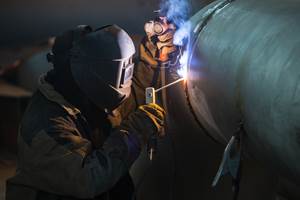Taking Steps To Improve Your Processes
Most of us recognize there is room for improvement in the way we do things. We would like to introduce these improvements, but unfortunately, with the daily pressures of meeting deadlines and doing whatever it takes to satisfy our customers, we just do not have the time.
Most of us recognize there is room for improvement in the way we do things. We would like to introduce these improvements, but unfortunately, with the daily pressures of meeting deadlines and doing whatever it takes to satisfy our customers, we just do not have the time. Many companies use outside consultants to analyze existing processes and offer new ideas. A good consultant can assist a company in establishing a process improvement plan, then guiding the implementation of this plan.
One consultant with whom I have worked for many years is Richard Reale, president of Positive Impact Associates in Park Ridge, New Jersey. Mr. Reale has helped many manufacturers improve their operations by recognizing problems and working with employees to develop practical, proven solutions. Mr. Reale believes that many companies have similar types of problems and through simple analysis techniques can identify and resolve these problems.
Mr. Reale uses a series of questions that he has found effective in helping companies improve their processes. These questions are simple and can certainly be used for any type of process. Here they are in the order in which they should be addressed:
- Can we eliminate the process? Does each step in the process add value? Is the step a duplication of a previous or subsequent activity? Is the step a built-in correction that has been done unnecessarily for years? Steps such as filing, lifting, carrying, and inspecting are ideal candidates for elimination. Many companies move parts to temporary storage locations throughout a manufacturing cycle. This is an ideal type of process to eliminate, as there is no value added to any part by moving or storing it.
- Can we change the process? How can the operation be changed? Can different methods, tools, technologies or equipment be used to make the process better? Can we use less costly options? Does the operation have to be performed as frequently, and by as many people, as it is now? Can the operation be done faster? An example of a process that can be changed is deburring. It may be more economical to deburr a part automatically, using a vibratory finishing machine, than using hand tools.
- Can we rearrange the process? Is the process designed in the most efficient manner? Do people working on the process have to walk a great deal? Would changing the layout eliminate some of the handling or transportation steps now employed? Is the operation sequenced properly? Do we need to complete all operations sequentially, or can some be performed in parallel? An example of rearranging a process is transforming from a departmentalized process to a series of product-focused work cells. In a work cell, many of the handling and transportation issues are eliminated because a product is started and finished in one self-sufficient work area.
- Can we combine steps in the process? Can any operations be combined? Can equipment be relocated so that we can machine a part and assemble it in one operation? Can our suppliers perform some operations more effectively? Can our customers perform some operations more effectively? By combining operations, we can eliminate much of the non-value-added work required when moving parts from one operation to another. Performing secondary machining work during a CNC machining cycle is a good example of effectively combining operations.
- Can we simplify the process? What is the simplest way to achieve the objective or outcome of the process? Are we taking full advantage of tooling and fixturing to assist the operators? Are instructions easy to understand? Has all the necessary information been made available, including “helpful hints” or “pitfalls” inherent in the process? Replacing hand assembly of mechanical fasteners with an ultrasonic welding process, which requires fewer parts, is an example of simplifying a process.
- Can we imagine the perfect process? If we had no constraints, what would the perfect process be? How much time would it take? Would we get a better yield rate? Could we ship product to our customers faster? How much different is the perfect process from the present process and how can we get there? Can the perfect process be documented, either with a flow chart or series of simple bullet points? We may never achieve the perfect process, but that does not mean we should stop trying to get there.
Addressing questions such as those shown above can start any company on the road to process improvement. If you do not have the time or resources to do this yourself, consider getting outside help to improve your processes.
Related Content
10 Tips for Titanium
Simple process considerations can increase your productivity in milling titanium alloys.
Read MoreSelecting The Right Welder
Many machine shops, on occasion, have a need for welding. It may be for maintenance purposes, repair or to fill the odd contract. This story is a welding process primer for those shops whose main business isn't welding but need to know some basics.
Read MoreThreading On A Lathe
The right choices in tooling and technique can optimize the thread turning process.
Read MoreUnderstanding G27, G28, G29 and G30
Take a closer look at these reference position commands.
Read MoreRead Next
The Cut Scene: The Finer Details of Large-Format Machining
Small details and features can have an outsized impact on large parts, such as Barbco’s collapsible utility drill head.
Read More3 Mistakes That Cause CNC Programs to Fail
Despite enhancements to manufacturing technology, there are still issues today that can cause programs to fail. These failures can cause lost time, scrapped parts, damaged machines and even injured operators.
Read More





.jpg;maxWidth=300;quality=90)

.png;maxWidth=300;quality=90)















.jpg;maxWidth=970;quality=90)